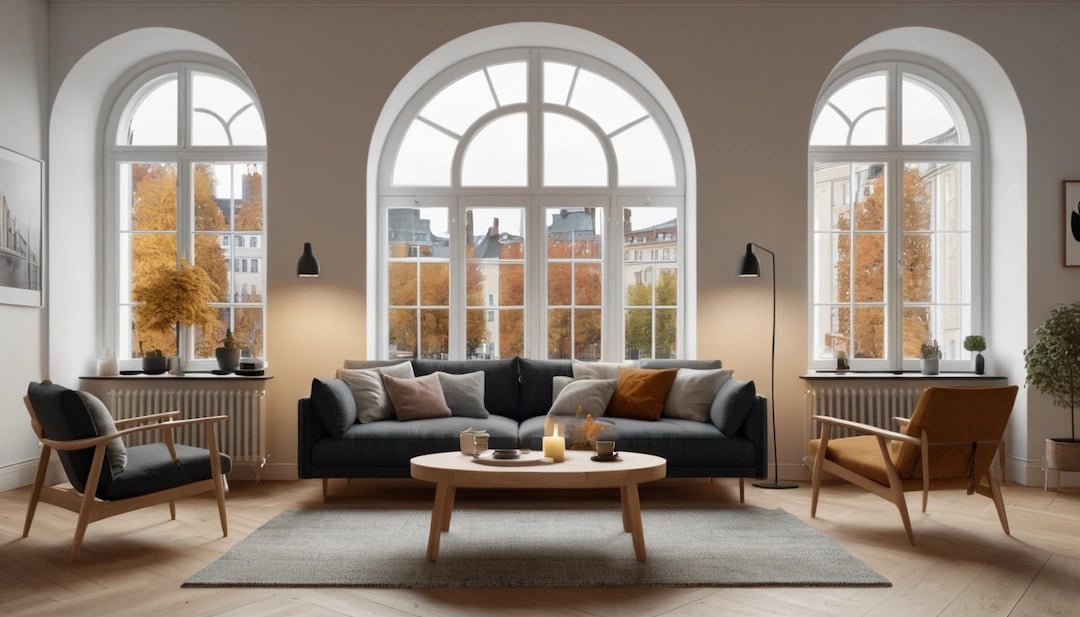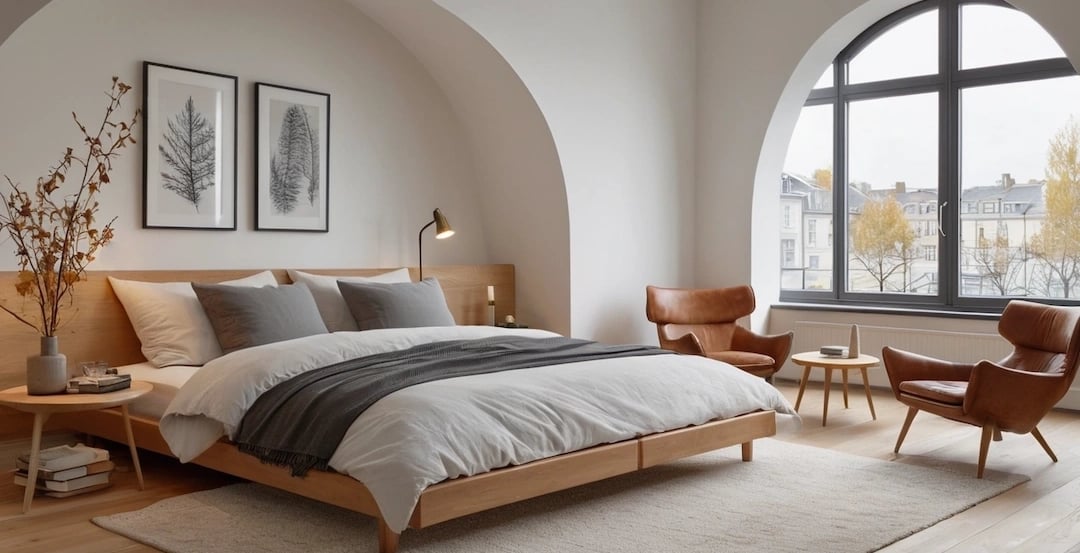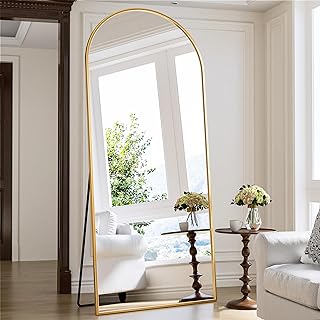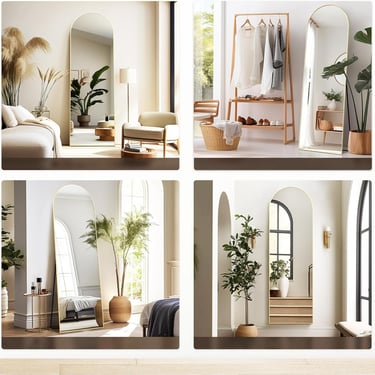25 ways to embrace the Scandinavian Lifestyle and Home Design (2024)
Explore minimalist décor and Scandinavian design for a harmonious lifestyle that promotes health and well-being in your home. Get tips and products to create a Scandinavian home haven.
HOME
Peter
5/8/202418 min read
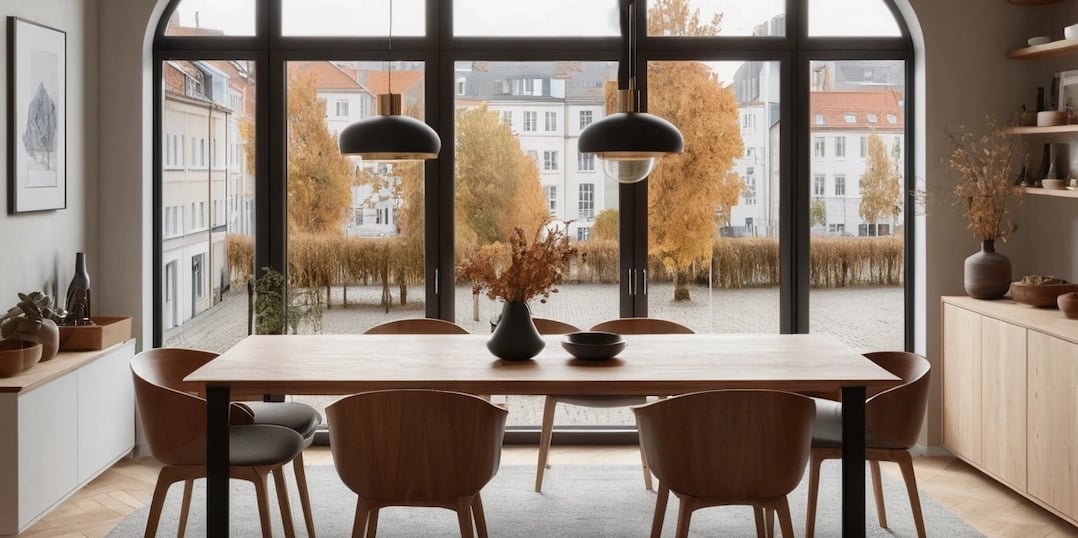

Embracing Scandinavian Serenity in My Home Décor: A Personal Journey
As I sit here in my living room, basking in the soft glow of natural light filtering through sheer curtains, I can't help but reflect on my journey to create a sanctuary within my own four walls. In today's fast-paced world, where chaos seems to reign supreme, I've discovered that our homes should serve as havens—places where we can retreat, recharge, and find peace. Through my exploration of various design philosophies, I've found that one of the most effective ways to create such an environment is by embracing Scandinavian décor.
Known for its simplicity, functionality, and understated elegance, Scandinavian design has brought a sense of calm and serenity to my space that I never thought possible. The transformation didn't happen overnight, but rather through a series of thoughtful choices and gradual changes that have reshaped not only my living space but also my approach to daily life.
My journey began with a desire to declutter and simplify, inspired by the minimalist ethos that underpins Scandinavian design. As I cleared away the excess and focused on keeping only what truly brought value to my life, I found myself breathing easier, my mind less cluttered. This initial step set the stage for the aesthetic transformation that would follow.
Incorporating natural materials, neutral color palettes, and clean lines, I watched as my home gradually evolved into a space that felt both refreshing and nurturing. The emphasis on natural light, a cornerstone of Scandinavian design, has had a profound impact on my mood and energy levels, creating an environment that feels alive and invigorating.
But this journey has been about more than just aesthetics. It's been a holistic approach to creating a lifestyle that values simplicity, functionality, and a connection to nature. From the way I organize my belongings to the rituals I've developed around relaxation and self-care, the principles of Scandinavian design have permeated every aspect of my home life.
In the following pages, I'd like to share with you how I transformed my home into a serene haven inspired by the timeless principles of Scandinavian design, and how you can do the same. Whether you're looking to completely overhaul your living space or simply introduce elements of Scandinavian serenity into your current décor, this guide will provide you with practical tips, inspiration, and insights from my personal experience.
Join me as we explore the art of creating a home that not only looks beautiful but also feels like a true sanctuary—a place where you can unwind, recharge, and find your inner peace amidst the chaos of the outside world. Let's embark on this journey together, discovering how the simplicity and elegance of Scandinavian design can transform not just our homes, but our lives as well.
1. Emphasizing Simplicity and Functionality
When I first embarked on this journey of home transformation, I was overwhelmed by the sheer amount of possessions I had accumulated over the years. Scandinavian design principles taught me that less truly is more, a concept that would become the cornerstone of my new approach to living. I learned to focus on simple, functional furniture and decor that enhance the usability of a space without overwhelming it. This minimalist approach has allowed each piece in my home to stand out and serve a purpose, creating a harmonious balance between aesthetics and functionality.
I began by meticulously evaluating each item in my home, asking myself two crucial questions: Does this serve a purpose? Does it bring me joy? If the answer was no to both questions, I knew it was time to let go. This process wasn't easy; I had to part with items that held sentimental value but didn't align with my new aesthetic. However, the result was worth the emotional investment.
I replaced bulky, ornate furniture with pieces that have clean lines and simple shapes, focusing on multifunctionality. My new coffee table, for instance, doubles as a storage unit, perfect for hiding away magazines and remote controls when not in use. The sofa I chose converts into a comfortable bed for guests, eliminating the need for a separate guest room and maximizing the use of limited space.
In addition to furniture, I paid close attention to color schemes and materials. I opted for a neutral palette dominated by whites, grays, and natural wood tones, which create a sense of calm and spaciousness. Textiles in natural fibers like wool, linen, and cotton add warmth and texture without cluttering the visual landscape.
Lighting also played a crucial role in my Scandinavian-inspired redesign. I incorporated a mix of ambient, task, and accent lighting to create a warm, inviting atmosphere while ensuring functionality for various activities. Large windows, when possible, were left unobstructed to maximize natural light, a key element in Scandinavian interiors.
As I progressed through this transformation, I found myself becoming more intentional not just about my living space, but about my lifestyle as a whole. I began to appreciate quality over quantity, investing in fewer but better-made pieces that would stand the test of time.
The result of this journey has been transformative. My space now feels more open, more breathable, and infinitely more peaceful. It's not just a house; it's a thoughtfully curated home that reflects my values and supports my daily life. This Scandinavian-inspired approach has taught me that true luxury lies not in excess, but in the freedom and tranquility that come from living with less.
2. Embracing a Neutral Color Palette
One of the most significant changes I made was to my color scheme. The hallmark of Scandinavian interiors is a neutral color palette, and I fully embraced this concept. I painted my walls in soft whites and light grays, creating a calm and serene backdrop that enhances natural light. These colors remind me of the Scandinavian landscape and its seasonal variations, bringing a touch of nature indoors.
At first, I worried that a neutral palette might feel boring or sterile. But I quickly learned that the key is in the details and the artful use of contrast and texture. I use varying textures and materials to add depth and interest to the monochromatic palette. My white linen sofa is adorned with a gray woolen throw and cushions in various shades of beige and cream. The natural wooden coffee table adds warmth to the space, while a black and white photograph on the wall provides a striking focal point.
To further enhance the neutral base, I incorporated subtle color accents inspired by Scandinavian nature. Soft blues reminiscent of fjords, pale greens echoing forests, and gentle pinks reflecting Nordic sunsets are used sparingly in decorative objects, artwork, or small furniture pieces. These muted tones add a layer of visual interest without overpowering the tranquil atmosphere.
Lighting plays a crucial role in bringing out the best in a neutral palette. I installed a mix of warm and cool light sources to create different moods throughout the day. Pendant lights with metallic finishes add a touch of glamour and help to reflect light around the room, while table lamps with linen shades provide a soft, diffused glow in the evenings.
I also learned the importance of incorporating natural elements to prevent the space from feeling too clinical. Potted plants, woven baskets, and wooden sculptures not only add texture but also bring life and organic shapes to the room. A sheepskin rug draped over a chair adds both visual and tactile warmth, embodying the Scandinavian concept of "hygge" or cozy comfort.
The neutral backdrop has proven to be incredibly versatile. It allows me to easily switch up accents seasonally or as my mood changes, without disrupting the overall serenity of the space. In winter, I might add deeper, richer tones through throw pillows or blankets, while in summer, I can introduce lighter, breezier fabrics and pastel accents.
This approach to color has taught me the power of restraint in design. By limiting the color palette, I've created a space that feels expansive, peaceful, and timeless. The result is a home that feels cohesive and calm, yet far from dull. It's a sanctuary that soothes the senses and provides a blank canvas for life's experiences to unfold.
3. Maximizing Natural Light and Open Spaces
Living in a bustling city, I've always craved more connection with nature. Scandinavian design places a strong emphasis on natural light, and this principle has transformed my home. I removed heavy curtains and replaced them with light, sheer options that allow maximum light into my rooms. For privacy without sacrificing light, I installed top-down, bottom-up blinds that enable me to control light and visibility precisely.
I also rearranged my furniture to create an open layout that promotes the flow of light and air. Bulky pieces were replaced with more streamlined options, and I positioned larger items against walls to maximize floor space. This not only enhances the sense of openness but also improves circulation and makes the space more conducive to movement and social interaction.
One of my favorite additions has been a large mirror strategically placed opposite my living room window. It reflects and amplifies the natural light, making my space feel larger and brighter. I've also incorporated smaller mirrors and reflective surfaces throughout the home to further distribute light and create visual interest.
To enhance the connection with nature, I've introduced a variety of indoor plants. Not only do they improve air quality, but they also add life and color to the space. I chose species that thrive in indoor conditions and complement the Scandinavian aesthetic, such as fiddle leaf figs, snake plants, and trailing pothos.
On gloomy days, I supplement with warm, diffused lighting to maintain that bright and airy feel. I've installed dimmer switches on overhead lights and incorporated a variety of light sources at different heights – floor lamps, table lamps, and pendant lights – to create a layered lighting scheme that can be adjusted according to the time of day and desired ambiance.
I've also paid attention to the colors and finishes in my space. Light-colored walls and floors help to reflect and amplify available light. I chose materials with a slight sheen, like semi-gloss paint and polished wood floors, which further enhance light reflection without creating glare.
To maintain the open feel while still defining different areas of my home, I've used clever space-dividing techniques. A open bookshelf serves as a partial room divider, allowing light to pass through while creating distinct zones. Area rugs help to delineate spaces without interrupting the flow of the room.
This focus on light and openness has not only enhanced the aesthetic appeal of my home but has also significantly improved my overall wellbeing. I find myself feeling more energized and positive, even on the dreariest of days. The connection to natural light rhythms has improved my sleep patterns, and the uncluttered, open spaces have reduced my stress levels.
Moreover, this approach has made my modest city apartment feel much more spacious and airy. It's a testament to the power of thoughtful design in transforming not just a living space, but also the quality of life within it. My home now feels like a bright, open sanctuary amidst the urban hustle, embodying the Scandinavian ideal of a harmonious, light-filled living space.
4. Incorporating Natural Materials
As I delved deeper into Scandinavian design, I realized how much emphasis it places on natural materials. This principle has become a cornerstone of my home's transformation, allowing me to create a space that feels both sophisticated and deeply connected to nature. I've incorporated wood, stone, leather, wool, and various plant-based materials throughout my home, creating a warm and inviting atmosphere. These materials add texture and warmth, counterbalancing the simplicity of the design and fostering a sense of calm and groundedness.
My dining table is now a beautiful piece of solid oak, its natural grain adding character to my eating area. I chose a table with a live edge, showcasing the organic form of the wood and serving as a conversation piece. The chairs are a mix of woven rattan and bentwood, adding textural variety while maintaining a cohesive natural theme.
In the kitchen, I opted for stone countertops, their cool surface a pleasure to touch as I prepare meals. I selected a honed finish rather than a high-gloss one, which not only feels more natural but also hides small imperfections that come with daily use. To complement the stone, I installed open shelving made from reclaimed wood, which adds warmth and provides a perfect display for my collection of handmade ceramic dishes.
Leather features prominently in my living space, adding a touch of luxury and a natural patina that improves with age. The cushions on my reading chair are made from vegetable-tanned leather, which will develop a beautiful, unique character over time. In contrast, I've used linen for my sofa upholstery, its slightly irregular texture providing a perfect counterpoint to the smooth leather.
Wool plays a crucial role in adding warmth and comfort to my home. I've layered wool rugs underfoot, providing insulation and a soft texture that's a pleasure to walk on. The rugs are a mix of traditional Scandinavian designs and more modern, abstract patterns, all in natural, undyed wools that showcase the material's inherent beauty. Wool also features in my choice of throws and cushions, adding cozy texture to seating areas.
I've incorporated other natural materials in smaller doses for added interest. A jute pendant light in the dining room adds textural contrast to the smooth wood of the table. Rattan baskets provide stylish storage solutions while adding a touch of bohemian flair. In the bathroom, I've used a combination of slate tiles and a teak bath mat to create a spa-like atmosphere.
Perhaps the most significant change has been the introduction of houseplants. They play a crucial role in bringing the outdoors in, adding a touch of greenery and freshness to every room. From a tall fiddle leaf fig in my living room corner to small succulents dotting my workspace, these plants have become like friends, requiring care and in return, purifying the air and lifting my spirits. I've also added a vertical garden in my kitchen, where I grow herbs for cooking, adding both functionality and natural beauty to the space.
To further enhance the connection with nature, I've incorporated natural fibers in my textiles. Linen curtains allow soft light to filter through, while organic cotton bedding ensures a comfortable and eco-friendly sleep environment. I've even replaced synthetic cleaning tools with natural alternatives like coconut fiber scrub brushes and cotton cleaning cloths.
The use of natural materials extends to my decor choices as well. I display collections of smooth river stones, driftwood pieces, and pressed leaves in simple frames, creating mini nature vignettes throughout my home. These small touches reinforce the connection to the natural world and add personal, curated elements to the space.
This focus on natural materials has transformed my home into a sanctuary that feels both timeless and deeply connected to the earth. It's a space that engages all the senses - the sight of beautiful grains and textures, the touch of varied surfaces, the scent of wood and plants. More than just a design choice, this approach has fostered a greater appreciation for the natural world and a desire to live more sustainably. My home now feels like an extension of nature, a calm and nurturing environment that supports both my physical comfort and emotional well-being.
5. Layering Textures and Cozy Elements
While embracing minimalism, I was initially concerned that my home might feel cold or uninviting. However, I've learned that Scandinavian design, while clean and simple, is also inherently cozy. The secret lies in layered textures and soft textiles that create a sense of warmth and comfort, embodying the Danish concept of "hygge" - a feeling of coziness and contentment.
I've adorned my sofa with plush throws and an assortment of cushions in various textures – some velvet, some knitted, others in raw linen. I carefully selected these pieces not just for their tactile qualities, but also for their subtle variations in color that add depth to the neutral palette. The mix of textures invites touch and creates visual interest without cluttering the space.
My bedroom features a thoughtful blend of materials to create a cocoon-like atmosphere. Crisp cotton sheets form the base, layered with a soft wool blanket for warmth, and topped with a chunky knit throw for added texture. I've incorporated a mix of pillow sizes and fabrics, from smooth silk pillowcases to textured linen shams, creating an inviting nest for restful nights.
In the living room, a shaggy high-pile rug adds softness underfoot, contrasting beautifully with my sleek leather armchair. This juxtaposition of rough and smooth, soft and firm, is a key principle I've applied throughout my home. For instance, I paired a rough-hewn wooden coffee table with smooth ceramic vases, and placed a woven basket next to a polished metal floor lamp.
I've also paid attention to the walls and windows as opportunities for texture. Linen curtains add a soft, organic element that gently filters light, while a textured wallpaper in the entryway provides subtle visual interest without overwhelming the space. A gallery wall featuring a mix of framed prints, woven wall hangings, and small sculptural pieces adds depth and personality.
Natural materials play a crucial role in my textural palette. Wooden elements, from furniture to small decorative objects, add warmth and organic texture. Stone or concrete accents, like a minimalist planter or a sleek side table, provide a cool contrast to softer elements.
To enhance the cozy atmosphere, I've incorporated elements that appeal to other senses as well. Scented candles in warm, natural fragrances like vanilla or wood create a comforting ambiance, while a small indoor fountain in the corner adds a soothing auditory element.
These layers of texture not only add visual interest but also make my home feel lived-in and comfortable. They invite touch and relaxation, turning my space into a true haven. The combination of clean lines and varied textures creates a balance between simplicity and warmth, demonstrating that minimalism doesn't have to mean austere.
Moreover, I've found that this approach to layering textures allows for seasonal adaptations. In colder months, I can easily add more layers and heavier textures for extra warmth, while in summer, I can pare back to lighter, airier fabrics without losing the essential character of the space.
This textural richness has transformed my home into a multisensory experience. It's a space that not only looks beautiful but feels incredibly comfortable and inviting. It's proof that with careful curation, a minimalist space can be both visually calm and deeply cozy, offering a perfect retreat from the outside world.
6. Decluttering and Organizing
Perhaps the most challenging but rewarding aspect of my Scandinavian-inspired makeover was the process of decluttering and organizing. A clutter-free environment is essential for achieving the serene, orderly look characteristic of Scandinavian interiors, and it's a principle that extends beyond mere aesthetics to influence lifestyle and well-being.
I began by conducting a thorough inventory of my possessions, a process that was both daunting and enlightening. I sorted items into categories: keep, donate, sell, and discard. This method, inspired by organizational experts, helped me to see the true extent of my belongings and make more objective decisions about what to retain.
For items I decided to keep, I invested in stylish storage solutions that align with Scandinavian design principles. Woven baskets in natural materials like seagrass or jute now house everything from throw blankets to magazines, adding texture while concealing clutter. I installed minimalist floating shelves, their clean lines providing display space without visual bulk. Furniture with hidden storage compartments, such as a bed with built-in drawers and a coffee table with a lift-top, maximize functionality without sacrificing style.
In the kitchen, I embraced open shelving for frequently used items, forcing me to curate a collection of aesthetically pleasing yet functional dishware. Less frequently used appliances and tools are stored in cabinets with custom organizers to maximize space efficiency.
My closet underwent a dramatic transformation. I adopted a capsule wardrobe approach, keeping only versatile, high-quality pieces that I truly love and wear regularly. This not only simplified my daily routine but also freed up significant space.
But more importantly, I adopted a new mindset. I now regularly evaluate my belongings, keeping only items that add value or joy to my life. This aligns with the Swedish concept of "lagom," which roughly translates to "just the right amount." I've learned to appreciate quality over quantity and to resist the urge to accumulate unnecessary possessions.
I implemented a "one in, one out" rule to maintain the decluttered state. When I bring a new item into my home, I remove something else, preventing the gradual accumulation of clutter. I also established designated spots for everyday items like keys, mail, and charging cables, reducing daily clutter and streamlining routines.
Digital decluttering became an unexpected but crucial part of this process. I organized my computer files, unsubscribed from unnecessary emails, and curated my social media feeds. This digital tidying has had a surprisingly significant impact on my overall sense of order and calm.
This ongoing process of decluttering has been liberating on multiple levels. My space feels more open and breathable, allowing the carefully chosen elements of my Scandinavian-inspired design to shine. My mind feels clearer, unburdened by the visual and mental weight of excess possessions. I find it easier to relax and unwind when I'm not surrounded by unnecessary items, and my home has become a true sanctuary.
Moreover, this decluttering journey has influenced my consumption habits. I'm more mindful about new purchases, considering their long-term value and place in my home. This has led to more sustainable lifestyle choices, aligning with the eco-conscious aspects of Scandinavian design philosophy.
The challenge now lies in maintaining this clutter-free environment. It requires ongoing effort and mindfulness, but the benefits - a calmer space, easier cleaning, and a greater appreciation for what I own - make it worthwhile. This aspect of my Scandinavian-inspired makeover has truly been transformative, extending far beyond aesthetics to influence my overall quality of life.
Personal Touches
Embracing Scandinavian serenity in my home décor has been more than just a design choice; it's become a lifestyle that promotes simplicity, functionality, and a deep connection with nature. By focusing on minimalism, natural elements, and cozy touches, I've transformed my home into a serene sanctuary that reflects the tranquility and beauty of Scandinavian design.
This journey has taught me to appreciate quality over quantity, to find beauty in simplicity, and to create spaces that truly enhance my wellbeing. My home is now a place where I can fully relax, recharge, and find peace amidst the chaos of everyday life.
If you're feeling overwhelmed by clutter or yearning for a more serene living space, I encourage you to explore the principles of Scandinavian design. Take a step back, simplify, and let the serene elegance of this style bring peace and harmony into your home. Remember, it's not about achieving perfection, but about creating a space that feels right for you – a true sanctuary where you can be your best self.
As I sit here, surrounded by the calm and beauty of my Scandinavian-inspired home, I can truly say that this design philosophy has not only transformed my living space but has also positively impacted my overall quality of life. And isn't that, after all, what a home should do?
While I love the clean lines and simplicity of Scandinavian design, I didn't want my home to feel like a showroom. This is where the concept of 'hygge' comes in – a Danish term for coziness and comfort that's essential to making a house feel like a home.
I've created cozy nooks throughout my home. My favorite is a reading corner with a comfortable chair, a soft blanket, and a warm lamp. It's the perfect spot for curling up with a good book on a rainy day. I've also displayed family photos and cherished mementos, but in a curated way that doesn't detract from the overall serenity of the space.
Candles are another important element of hygge. I love lighting scented candles in the evening, their soft glow creating a warm and inviting atmosphere. These personal touches and cozy elements make my home feel uniquely mine, a true reflection of my personality and values.
Here is my Hygge checklist:
Creating a Hygge Environment
The essence of hygge lies in a cozy environment. Start with lighting—think soft, warm illumination rather than harsh, bright lights. Candles are quintessential to hygge. Scatter them around your living space to create a soft, flickering glow. Fairy lights or a well-placed lamp with a warm bulb can also contribute to the ambiance.
Comfortable Textiles
Layering with textiles is key to achieving hygge. Imagine sinking into a plush sofa covered in soft blankets and cushions. Choose materials like wool, cotton, and fleece for throws and pillows. A chunky knit blanket draped over your favorite armchair invites you to curl up with a hot drink.
Conclusion: My Scandinavian-Inspired Sanctuary
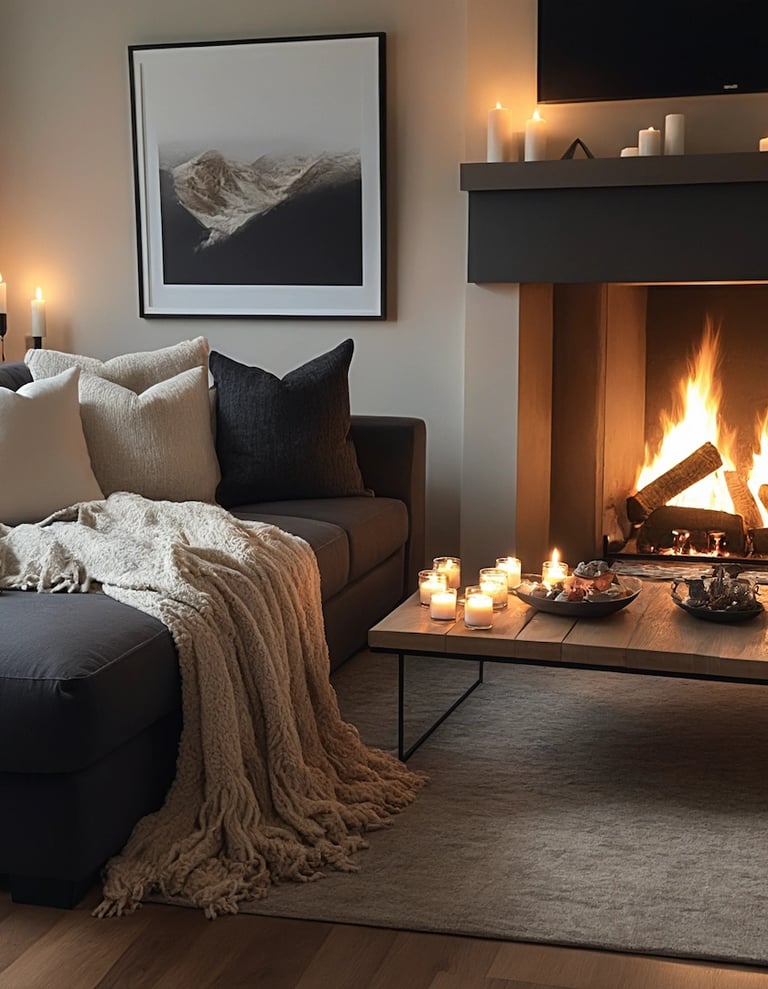

Warm Drinks and Comfort Food
Hygge often involves enjoying comforting food and beverages. Think hot chocolate with marshmallows, a steaming cup of tea, or a rich, aromatic coffee. Pair these with homemade treats like cookies, pastries, or a hearty bowl of soup. The act of preparing and sharing these delights with loved ones enhances the hygge experience.
Nature Indoors
Bringing elements of nature inside can also promote hygge. Houseplants, fresh flowers, and natural wood accents contribute to a serene environment. A vase of fresh tulips or a rustic wooden coffee table can make your space feel more connected to the natural world.
Quality Time
Hygge is as much about people as it is about the environment. Spending quality time with loved ones in a relaxed setting fosters a sense of community and well-being. Whether it’s a game night, a movie marathon, or simply sharing stories by the fireplace, these moments of togetherness are the heart of hygge.
Mindfulness and Simplicity
At its core, hygge is about mindfulness and appreciating the present. It’s taking a break from the hectic pace of life to savor simple pleasures. This might mean unplugging from technology for a while, reading a book, or taking a leisurely walk. The goal is to create moments of peace and contentment in your daily routine.
Embracing hygge is about fostering a lifestyle that values coziness, simplicity, and togetherness. By incorporating these elements into your home and daily life, you can cultivate a sense of warmth and happiness that embodies the true spirit of hygge.
Welcome to my world of creative expression! Based in the heart of Copenhagen but reaching customers worldwide, I bring over 500 unique designs to life on t-shirts, hoodies, mugs, and more. Passionate about graphic design, I combine Nordic inspiration with global appeal to offer stylish, high-quality merchandise through Shopify/Printify and Teepublic. Whether you’re looking for a cozy sweatshirt or a personalized Coffee Mug, each product is crafted to make everyday moments extraordinary.
Explore, express, and enjoy!
Advertisment for our Merchndise Shop

